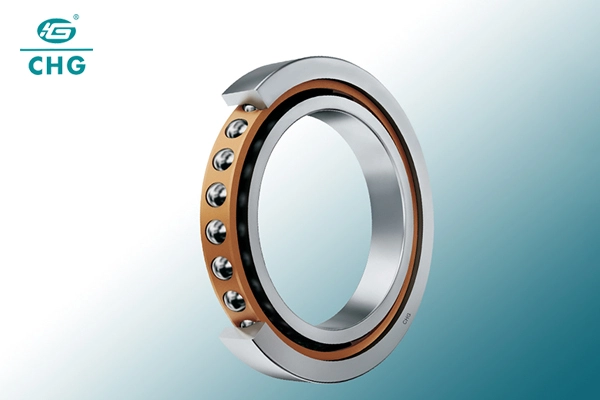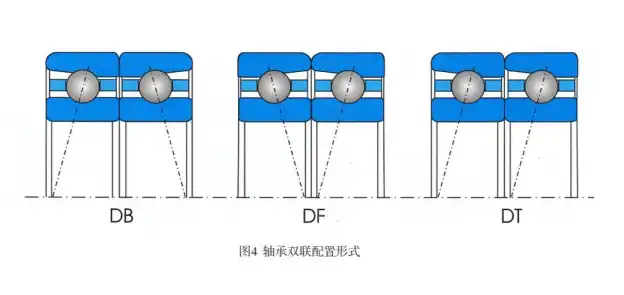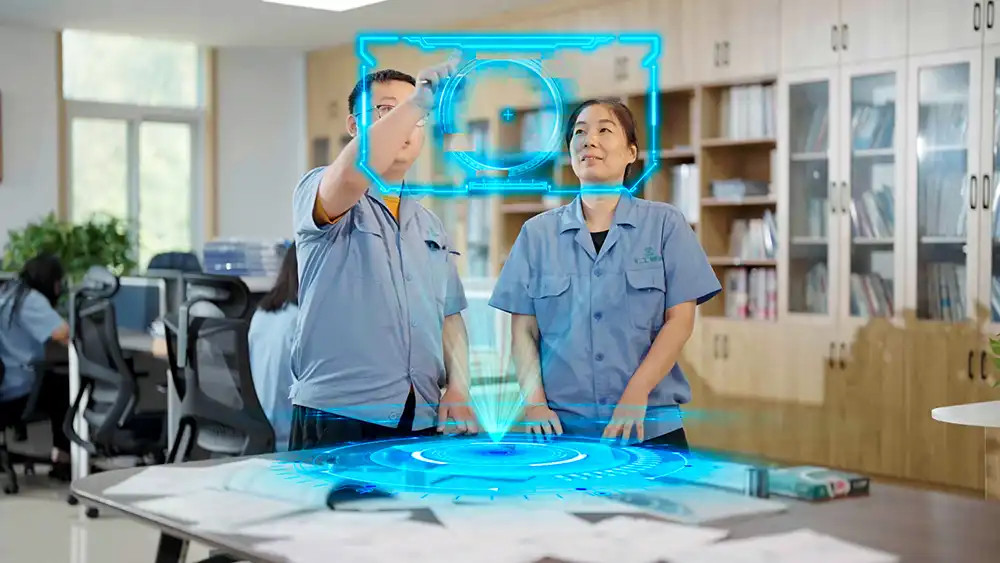Can Precision Angular Contact Ball Bearings Operate at High Speeds?
Precision angular contact ball bearings are specialized rolling element bearings designed to handle combined loads while maintaining exceptional accuracy at high rotational speeds. These components feature raceways displaced relative to each other in the bearing axis direction, creating a specific contact angle that optimizes performance. As industries demand higher efficiency, greater precision, and enhanced reliability from rotating machinery, understanding whether precision angular contact ball bearings can effectively operate at high speeds becomes increasingly important.

What Factors Affect the Speed Capability of Precision Angular Contact Ball Bearings?
The Role of Contact Angle in High-Speed Performance
The contact angle of precision angular contact ball bearings significantly influences their speed capabilities. This angle typically ranges from 15° to 40° and represents the line connecting the points of contact between balls and raceways. Bearings with smaller contact angles (15°-25°) generally achieve higher speed ratings while maintaining good radial load capacity. As the contact angle increases to 25°-40°, axial load capacity improves, but maximum permissible speed decreases. Engineers must select the appropriate contact angle based on application requirements, as this parameter impacts the bearing's DN value (bore diameter in mm multiplied by speed in rpm). Precision angular contact ball bearings with optimized contact angles can achieve DN values exceeding 1.5 million in certain applications.
Material Composition and Manufacturing Precision
Material composition and manufacturing precision directly influence high-speed performance capabilities. Premium precision angular contact ball bearings typically utilize high-grade bearing steels like AISI 52100 or AISI 440C with specialized heat treatments. For demanding high-speed applications, ceramic materials like silicon nitride are used for ball elements, creating hybrid bearings with advantages including weight reduction, higher rigidity, and lower thermal expansion. Manufacturing precision is equally important, with ABEC 7 or ABEC 9 tolerance bearings demonstrating better high-speed performance due to exceptional roundness and surface finish. Superior materials and precise manufacturing enable these bearings to maintain critical operating clearances at extremely high rotational speeds.

Lubrication Methods and Heat Dissipation Techniques
Effective lubrication and heat management are critical for precision angular contact ball bearings in high-speed operation. At elevated speeds, heat generated through friction impacts bearing temperature, affecting lubricant viscosity, internal clearances, and service life. Specialized lubrication methods include oil-air mist systems, oil-jet lubrication, or formulated greases with low-friction characteristics. Advanced cooling techniques such as directed air-cooling systems or integrated cooling channels help dissipate heat effectively. Many high-speed applications employ bearings with phenolic or polyamide cages that offer reduced mass and improved lubricant flow. Optimized lubrication and heat management allow precision bearings to operate reliably at speeds that would otherwise cause rapid failure.

How Do Different Mounting Arrangements Impact High-Speed Operation of Precision Angular Contact Ball Bearings?
Single versus Duplex Bearing Configurations
Mounting arrangement significantly influences performance in high-speed applications. Single precision angular contact ball bearings achieve high speeds but provide limited axial stability in one direction. For greater rigidity and bidirectional axial load capacity, duplex arrangements become necessary, including back-to-back (DB), face-to-face (DF), and tandem (DT) configurations. Back-to-back configurations increase moment rigidity for applications requiring rotational accuracy and stiffness. Face-to-face arrangements offer lower moment stiffness but better accommodate thermal expansion. Tandem configurations maximize axial load capacity in one direction but generally operate at lower speeds. The preload between bearings requires careful consideration, as excessive preload generates additional heat detrimental to bearing life.
Spindle Design and Bearing Seat Tolerance Effects
Spindle design and bearing seat tolerance precision critically affect high-speed performance. The spindle material, diameter, and geometric accuracy create the foundation for bearing operation. Bearing seat tolerances on both shaft and housing influence performance at elevated speeds. High-speed applications typically require interference fits for the rotating ring to prevent slippage, while allowing a slightly looser fit for the stationary ring to accommodate thermal expansion. Excessive interference can distort raceways and reduce internal clearance, while insufficient interference may result in ring creep. For ultra-high-speed applications, specialized mounting techniques ensure optimal seating without damage to bearing components.
Balancing Requirements and Vibration Management
Balancing and vibration management become increasingly critical at higher speeds. Minor imbalances generate significant centrifugal forces that impose additional loads on bearings. High-precision balancing to ISO 1940-1 G1 or better is typically required above 10,000 RPM. The design must account for potential resonance frequencies during operation. High-quality precision bearings manufactured to ABEC 7/9 standards minimize inherent vibrations, but additional measures like damping systems may be necessary for demanding applications. Monitoring technologies often complement these installations to provide real-time operational data. The entire rotating system must be considered holistically to ensure effective vibration management throughout the speed range.

What Emerging Technologies Are Enhancing the Speed Capabilities of Precision Angular Contact Ball Bearings?
Advanced Ceramic and Hybrid Bearing Innovations
Ceramic materials integration represents a significant advancement enhancing high-speed capabilities. Hybrid precision angular contact ball bearings with ceramic rolling elements offer substantial performance improvements, including reduced centrifugal loading and more consistent internal clearances during operation. The superior surface finish achievable with ceramic balls reduces friction and micro-welding phenomena. Manufacturers continue refining ceramic processing techniques to develop materials with enhanced fracture toughness while optimizing ball-to-raceway conformity for high-speed applications. Research into next-generation ceramic composites promises to further extend speed capabilities of precision angular contact ball bearings.
Computational Modeling and Optimized Internal Geometry
Advanced computational modeling has revolutionized design for high-speed applications by enabling detailed analysis of internal geometry. Sophisticated simulations allow engineers to predict bearing behavior under extreme conditions, including component deformation, lubricant flow patterns, and thermal gradients. This capability has led to refined raceway curvature ratios and precision-engineered internal clearances tailored for high-speed performance. Some advanced bearings feature asymmetric raceway designs that optimize contact pressure distribution or incorporate logarithmic profile raceways that maintain consistent loading as centrifugal forces increase.
Smart Bearing Systems and Integrated Monitoring
Smart bearing systems represent a significant advancement through integrated monitoring and adaptive control. These assemblies incorporate sensors that continuously monitor critical parameters such as temperature, vibration, and speed. Miniaturized sensor technology can be integrated without compromising structural integrity. The collected data is processed through algorithms that can detect subtle performance changes before they affect operation. Some systems incorporate active elements that adjust preload, lubrication flow, or cooling parameters in real-time, extending the safe speed range. This integration enables bearings to operate closer to theoretical speed limits while maintaining reliability through continuous monitoring.
Conclusion
Precision angular contact ball bearings demonstrate remarkable capabilities for high-speed operation when properly selected, installed, and maintained. Their performance depends critically on factors including contact angle, material quality, lubrication strategy, and mounting arrangement. As advanced manufacturing techniques, innovative materials, and smart monitoring systems continue to evolve, these specialized bearings will likely extend their speed capabilities even further, meeting the growing demands of high-performance industrial applications. Users seeking optimal results should carefully evaluate specific application requirements in consultation with bearing specialists to ensure the ideal configuration for their high-speed needs.

Luoyang Huigong Bearing Technology Co., Ltd. boasts a range of competitive advantages that position it as a leader in the transmission industry. Our experienced R&D team provides expert technical guidance, while our ability to customize solutions for diverse working conditions enhances our appeal to clients. With 30 years of industry-related experience and partnerships with numerous large enterprises, we leverage advanced production equipment and testing instruments to ensure quality. Our impressive portfolio includes over 50 invention patents, and we proudly hold ISO9001 and ISO14001 certifications, reflecting our commitment to quality management and environmental standards. Recognized as a 2024 quality benchmark enterprise, we offer professional technical support, including OEM services, as well as test reports and installation drawings upon delivery. Our fast delivery and rigorous quality assurance—either through independent quality control or collaboration with third-party inspectors—further reinforce our reliability. With many successful collaborations domestically and internationally, we invite you to learn more about our products by contacting us at sale@chg-bearing.com or calling our hotline at +86-0379-65793878.
References
1. Harris, T.A. and Kotzalas, M.N. (2023). "Advanced Concepts of Bearing Technology: Rolling Bearing Analysis and Optimization." 7th Edition, CRC Press, Boca Raton.
2. Zaretsky, E.V. (2022). "Bearing Design in Machinery: Engineering Tribology and Lubrication." Marcel Dekker, New York.
3. SKF Group (2023). "High-Speed Bearings: Technical Handbook for Precision Applications." SKF Publications, Gothenburg, Sweden.
4. Hamrock, B.J., Schmid, S.R., and Jacobson, B.O. (2022). "Fundamentals of Machine Elements." 4th Edition, CRC Press, London.
5. Harnoy, A. (2023). "Bearing Design in Machinery: Principles and Practice." 3rd Edition, Marcel Dekker, New York.
6. NSK Ltd. (2024). "Angular Contact Ball Bearings for High-Speed Applications: Technical Report." NSK Engineering Journal, Tokyo, Japan.

